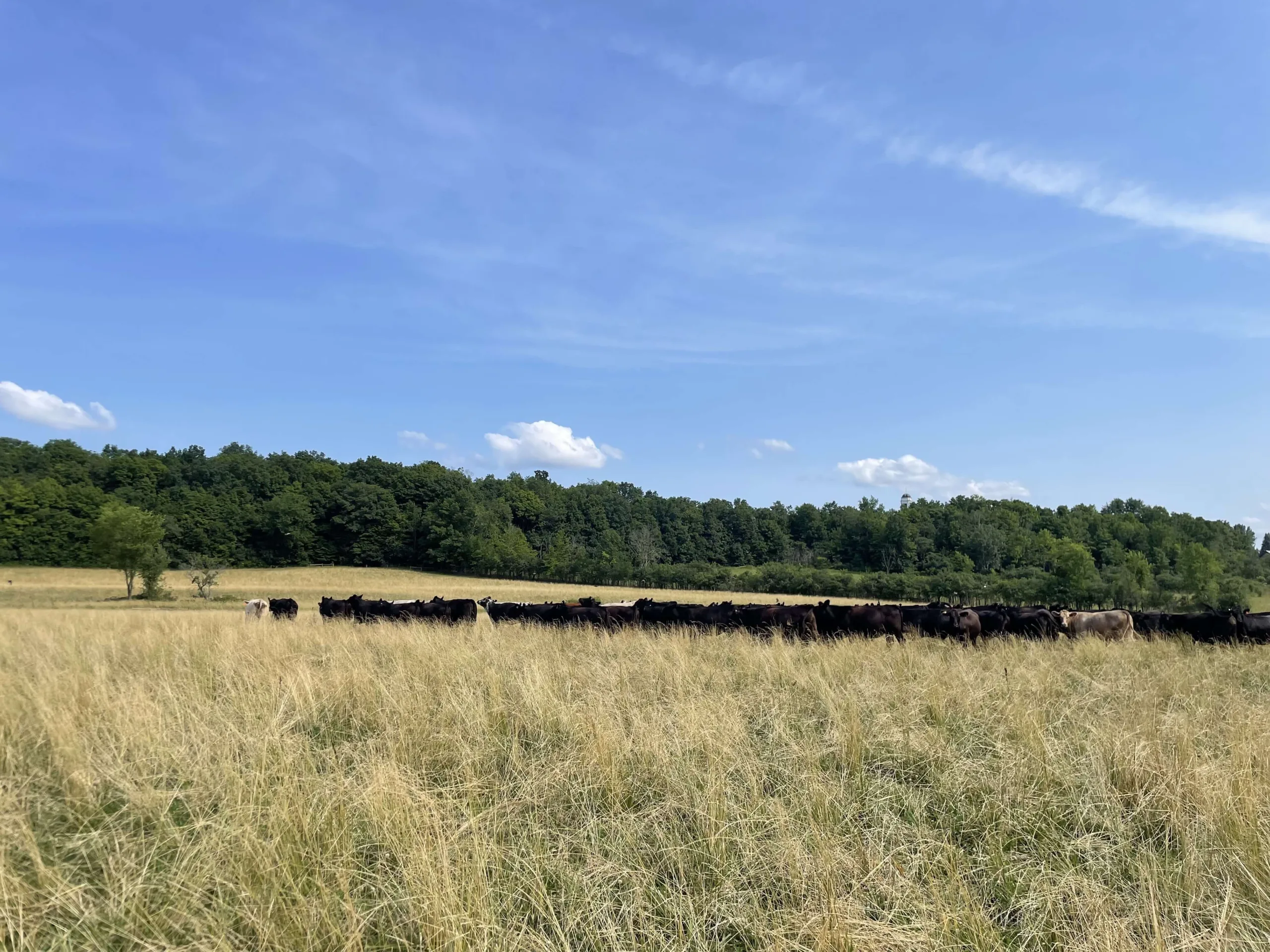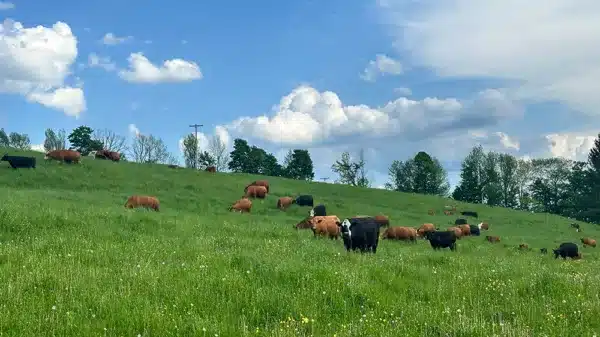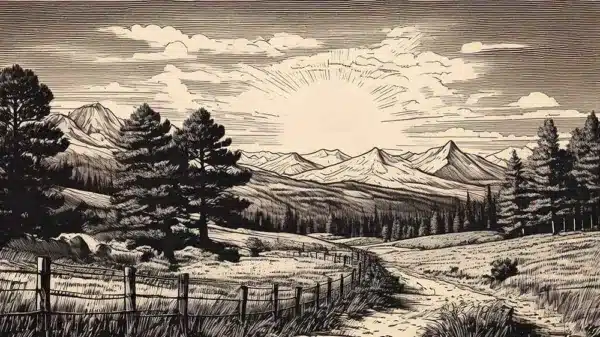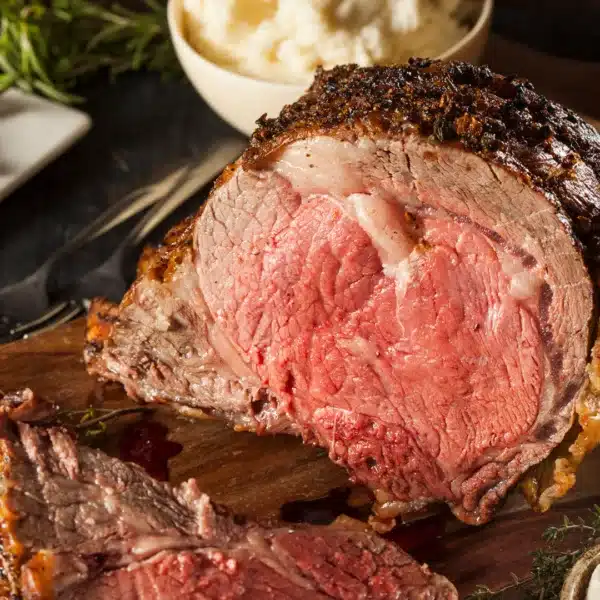Beyond Bigger: Redefining Growth With Regenerative Farming

Growth. It’s a word that makes people uneasy when it comes to food. We’ve been trained to associate “growth” with industrial farms swallowing up small ones, factory lines moving faster, and companies chasing scale at the expense of quality. And often, that’s exactly what happens. Practices that are degenerative, not regenerative.
But what if there’s another kind of growth? One that doesn’t just mean more, but better? Kevin Kelly, a futurist, former editor of Wired Magazine and author of The Inevitable describes the opportunity this way:
The Two Kinds of Growth
Type 1 Growth
Type 1 Growth is about scale. More units, more output, more land under plow. This is industrial agriculture—bigger barns, bigger herds, bigger everything.
Type 2 Growth
Type 2 Growth is about depth. It’s about learning, refining, and making what already exists more valuable. It’s not just producing more food—it’s producing better food, regenerating soil, and increasing the intelligence of the system itself.
For decades, agriculture has been stuck in Type 1 Growth—pushing for more yield per acre, more animals per farm, more efficiency at any cost. It’s a system that maximizes output in the short term but strips the land, mistreats animals, and forces farmers into a cycle of debt and depletion.
At Walden, we’re after Type 2 Growth—not just expanding, but deepening.
Farming with Intelligence, Not Just Intensity
Regenerative farming isn’t just about maintaining the land—it’s about improving it, season after season. That’s why we don’t just work with regenerative farmers—we actively invest in making them more successful.
Take soil, for example. In a Type 1 system, land is a fixed input. You fertilize it, plant it, harvest it, and repeat until the soil is exhausted, then move on to the next field. In a Type 2 system, the land itself becomes more productive over time. Instead of forcing more out of depleted soil, we build soil health, which naturally increases yields while storing more carbon, retaining more water, and supporting more life.
This plays out in our own network of regenerative farms. We’ve seen farmers improve their pasture health so dramatically that they can graze more animals on the same land—without overtaxing it. That’s not scale at the expense of the environment; that’s growth with intelligence.
And it’s not just about land. The same thinking applies to how we raise animals.
- Our farmers test different grazing rotations that make grasslands more resilient.
- They test different genetics—for cattle, hogs, sheep, chickens—to determine impact on demeanor, yield, meat quality and beyond — balancing productivity with respect for the animals’ well-being.
- They share seed varieties and crop strategies that improve forage quality and increase nutrient density.
Every lesson learned strengthens the network and improves our knowledge of how regenerative farming works across seasons and regions. Every acre improved feeds more people, supports more farmers, and pulls more carbon out of the air.
More Farmers, Not More Factories
The other big difference between Type 1 and Type 2 Growth? Who benefits.
Type 1 Growth concentrates power. It turns small farmers into workers on someone else’s land and funnels profits to a handful of agribusiness giants.
Type 2 Growth distributes power. It makes independent family farmers more successful, strengthens community food systems, and gives people more control over what they eat.
This is why we’ve expanded our network—not just to add farms, but to add the right farms. The farmers we partner with aren’t just suppliers. They’re innovators, testing new ways to farm with nature, not against it.
By working together, we’re not just increasing supply—we’re increasing knowledge. And knowledge compounds.
A Food System That Grows the Right Way
If we wanted to chase Type 1 Growth, we could do what the big guys do—cut corners, pack more animals into less space, and treat land as a disposable resource. But we believe in something better.
Type 2 Growth means:
- More regenerative acres under management—land that improves every year instead of depleting.
- More independent family farmers paid fairly—not squeezed by commodity pricing.
- More knowledge sharing between farms—so everyone benefits, not just a select few.
- More members connected to honest food—knowing exactly where it comes from and how it was raised.
All of which we measure and improve on over time as a Public Benefit Corporation
Not Just Growth. Progress.
The old way of farming treats land, animals, and people as expendable. We see them as the foundation of something better.
Related Posts

Our B Corp Recertification & Cultivating a Thriving Food System
This is about building something better—for the land, for farmers, for communities, and for the future.

Winter Pastures and Southern Wisdom
Change starts with the farmers. Those who wake up every day and choose to do things the right way, not the easy way.

Spring Holiday Prime Rib with Potatoes
Spring holidays are coming, and that means good food and company—hopefully with a side of laughter (and some bickering over who gets the last roast potato).